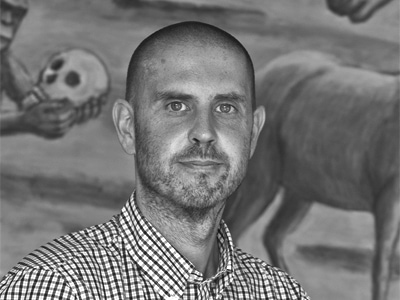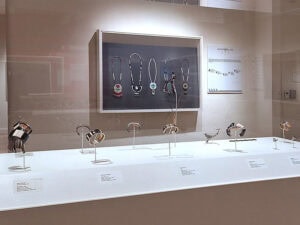After eleven years as an editor for Lark Books, Marthe Le Van is leaving to pursue new opportunities. In charge of the jewelry list, she has, since 2000, been responsible in one way or another for more than 60 publications. As a key player in contemporary jewelry publishing, AJF was keen to find out what Marthe thinks – about books and other things. Damian Skinner interviewed her by email and here’s what they discussed.
Damian Skinner: Over 60 books and counting, eh? Do you have a space on your bookshelf where you keep all the publications you’ve been involved with? And if so, how do you arrange them?
Marthe Le Van: I’d like to say that I have a complete collection in my office, but inevitably a few titles are always missing off the shelf. I loan books to coworkers or send books out to contributors or reviewers without immediately replacing them. Editors – especially those who work on ‘series’ books such as the 500 series or the 30-Minute series – are always looking at previous publications to resolve style and consistency issues as they arise, hence the importance of a well-stocked shelf.
The top shelf holds all my gallery books and a few oversized titles. It’s rather astounding to see all the jewelry and metal books in the 500 series lined up in a row. The middle shelf is home to the instructional jewelry-making texts I’ve produced. On the bottom shelf are the craft and home decorating books I edited for Lark prior to my work in jewelry. I may have the same book three different ways: as a hardcover, a paperback and as translated and published in a different language for a foreign market.
In stark contrast to this, very few of the titles I have worked on live on my bookshelves at home. Perhaps this will change once I leave Lark.
What are the highlights of your publishing career so far? The books you feel most proud of being associated with? I suppose that’s another way of asking what you think is an outstanding book about contemporary jewelry.
This is a tricky question to answer. Somewhat like declaring a favorite child. I commit myself to each book for two or more years. During that time, I grow fond of them all for different reasons. Each book is beautiful in its own way, but if forced into naming just a couple of personal favorites, here they are.
The Penland Book of Jewelry was an epic editorial undertaking. I managed to wrangle ten chapters from ten jewelers teaching ten advanced techniques with ten hands-on photo shoots by ten different photographers in ten different cities into one lovely and informative (and coherent!) book. Whew! It is an impressive and important set of master classes and I am very proud to have pulled it off for the field, for Lark and for the Penland School of Crafts.
Linda Darty’s The Art of Enameling is the best instructional text on the subject, period. In publishing terms, it’s a ‘category killer.’ It is a library staple for institutions and jewelers alike. It has had an enormous impact and will continue to lead the field in the future. It was a very challenging project that pushed my abilities to the limit, but I am so proud to have endured and to have edited this significant text.
Joanna Gollberg’s Making Metal Jewelry and The Art & Craft of Making Jewelry took the mystery out of metalworking and the fear out of torches for a huge market of eager but inexperienced jewelry makers. Through these two books, Joanna Gollberg opened the door for thousands of crafters to begin challenging themselves to learn more complex skills and thereby create better work. Who can ask for anything more?
Before 1000 Rings, I knew nearly nothing about jewelry. In one weekend of jurying, Robert Ebendorf changed that completely. The success of 1000 Rings, its effect on my work and that of the American jewelry community, has been astonishing. The series, now fourteen books strong, brings art jewelry to a mass market.
It’s interesting that you mention the mass market. Contemporary jewelry has, I think, a deserved reputation as an insular practice that doesn’t do much to connect to an audience beyond the small group of people who already know about the field and are invested in it. Do you agree? Have you encountered any difficulties in connecting contemporary jewelry to a bigger audience?
I feel that contemporary jewelry is a massive field that has little trouble connecting to a large market. Just think of the number of jewelers showing and selling handmade work at any given craft gallery or street fair or on Etsy. Just think of the customer’s thought process in approaching the work – recognizable forms with obvious functions that are attractive. With these advantages, what artist seeking to connect with an audience would choose any form other than jewelry?
That being said, I think there are varying amounts of art in contemporary jewelry. Some pieces have very little art in them and in some pieces, the art is abundant. In my experience, the insulation and disconnect often comes from the mass market’s inability to immediately understand and appreciate a very small portion of the latter – unrecognizable forms with ambiguous functions that are unattractive. And I am perfectly okay with this. I don’t feel that everyone should ‘get’ the most challenging contemporary jewelry.
Bringing contemporary (art full) jewelry to a large audience has been surprisingly easy for me and I think this is because Lark’s jewelry books sell so well. Had they been faced with abysmal sales, the higher–ups might have tried to reign in my efforts. Getting cover images approved for books in the 500 series has been a bit of a struggle. ‘That doesn’t look like a ___ (fill in the blank: ring, bracelet, etc.).’ But I’ve also learned valuable lessons about the benefits of compromise. An accessible cover piece is a perfect ‘spoonfull of sugar’ that helps the ‘medicine’ go down.
You’ve mentioned the 1000 Rings book, which spawned a series and is possibly Lark’s most famous publishing venture. Where did the idea for this book and series come from? And when you say it has affected your work and the American jewelry community, what do you mean?
Rob Pulleyn, the founder of Lark Books and a true visionary, created the 500 series. Because of Rob’s strong interest in ceramics and Lark’s solid reputation as a ceramics publisher, the first two books in the series were 500 Teapots and 500 Bowls. I had a gut feeling that the format of the 500 series would translate to jewelry, so I proposed 500 Rings and the series was off and running.
My experience with Robert Ebendorf was a watershed moment. Without his introduction to the international community, I may never have discovered the scope of interesting jewelry that was being created. Each juror that subsequently contributed to the series generously shared his or her unique expertise. I learned so much from each one. Finally, viewing 5000 to 15,000 images of jewelry in two days is an experience like none other. I emerged from these marathon sessions even more intrigued by jewelry and jewelers and thereby more inspired and committed to promoting the field.
The 500 series is a nearly perfect vehicle for exposure and stimulation. The books are widely distributed, affordably priced, need little translation and are easy-to-handle. They include images from jewelers working in all parts of the globe and sit on the shelves of institutions worldwide. This leads me to think they have had an affect on makers. I’ve also witnessed concepts, techniques and materials – even photography styles – become popular and spread rapidly. I think the 500 series has played a part in this.
Given your position with Lark and your work with contemporary jewelry, you’ve obviously thought a lot about how books about contemporary jewelry might fit into the publishing landscape. Are there any gaps you’ve identified, types of books or approaches to contemporary jewelry that you think should be published?
Equally terrifying and exhilarating is the fact that there isn’t a firm publishing landscape anymore. It’s more like a publishing ocean with a constant barrage of waves. One needs to be nimble and flexible to adapt to the onslaught of change.
One way I have learned to thrive is to shift my perspective about the work I do. I am no longer a ‘book editor.’ I am a ‘content provider.’
Printed books still play a valuable role in the dissemination of information, but they aren’t the only and certainly not always the best route to the reader for specific content. Other delivery methods might include blogs, digital downloads, apps, videos, podcasts, community forums and so on. Different content may be best served via one of these (no longer) alternative formats. The challenge of publishing is monetizing these efforts.
Consider this video on powder coating by Michael Dale Bernard. Many jewelers are interested in learning and using this technique. Michael Dale produced and distributed an excellent product in a timely fashion that addresses their basic needs. He’s gotten almost 5000 views to date. Would enough of those viewers then subscribe to a pay channel to see more demos? Would they purchase a printed or digital book to learn more? Opinions and answers to these questions change at a mind melting pace and just when you feel you’re on course, along comes another giant wave.
Who do you think are the most interesting publishers of contemporary jewelry at the moment, and what makes them stand out in your opinion? You can consider ‘publisher’ in its old and new sense.
I think the most interesting publishers of contemporary jewelry are those actually printing jewelry. Three-dimensional printing. Seems like a cheeky answer, but there is a great deal of truth to it. If a United States artist transmits her design files to the Netherlands and a small edition is printed and sold there, is the artist publishing jewelry?
But you were probably meaning books . . .
I don’t think book publishers are particularly interesting. For me, it’s the topic, the writer, the editing, the photos, the curating, the design, the packaging and the printing that are interesting. That being said, I do have a particular fondness for small exhibition catalogs and monographs that make the most of the artful potential of the book as an object. More often than not, these are published by gallery and museums and the jewelers themselves.
So now that you have left Lark Books, what are you going to do?
Not being one to waste any time, I launched two new businesses in January 2012. The first venture is in partnership with jeweler Joanna Gollberg. We’ve teamed up to open a retail store in downtown Asheville, North Carolina. We’ve just signed a lease on a marvelous storefront located in the same building as Joanna’s studio. I’ll manage the shop and Joanna Gollberg will design and make the jewelry. Joanna and I have a long history of creative collaboration. We began working together as editor and author a decade ago, with Joanna’s first book Making Metal Jewelry. Together we aim to fashion a very friendly, comfortable and lively event-filled space. We are ecstatic to combine our talents and build a vibrant new jewelry business. Look for our opening as soon as April 2012.
My second, eponymous business offers a wide range of custom freelance services for jewelers, publishers and arts organizations. My services are personalized for each client and they include writing and editing, marketing and promotions, public relations, brand evaluation and development, digital strategy and implementation, packaging for print, budgeting, project management, jurying and curating and editorial styling. Right now, I’m working on both long- and short-term assignments for a wide variety of clients, such as jewelers, publishers, and fashion stylists. My website for these services will launch later this month and my office will be located in my retail space. Stay tuned!

Damian Skinner: Over 60 books and counting, eh? Do you have a space on your bookshelf where you keep all the publications you’ve been involved with? And if so, how do you arrange them?
Marthe Le Van: I’d like to say that I have a complete collection in my office, but inevitably a few titles are always missing off the shelf. I loan books to coworkers or send books out to contributors or reviewers without immediately replacing them. Editors – especially those who work on ‘series’ books such as the 500 series or the 30-Minute series – are always looking at previous publications to resolve style and consistency issues as they arise, hence the importance of a well-stocked shelf.
The top shelf holds all my gallery books and a few oversized titles. It’s rather astounding to see all the jewelry and metal books in the 500 series lined up in a row. The middle shelf is home to the instructional jewelry-making texts I’ve produced. On the bottom shelf are the craft and home decorating books I edited for Lark prior to my work in jewelry. I may have the same book three different ways: as a hardcover, a paperback and as translated and published in a different language for a foreign market.
In stark contrast to this, very few of the titles I have worked on live on my bookshelves at home. Perhaps this will change once I leave Lark.
What are the highlights of your publishing career so far? The books you feel most proud of being associated with? I suppose that’s another way of asking what you think is an outstanding book about contemporary jewelry.
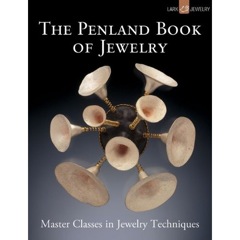
The Penland Book of Jewelry was an epic editorial undertaking. I managed to wrangle ten chapters from ten jewelers teaching ten advanced techniques with ten hands-on photo shoots by ten different photographers in ten different cities into one lovely and informative (and coherent!) book. Whew! It is an impressive and important set of master classes and I am very proud to have pulled it off for the field, for Lark and for the Penland School of Crafts.
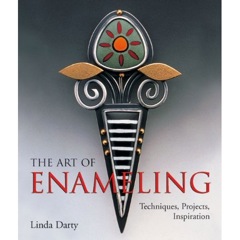
Joanna Gollberg’s Making Metal Jewelry and The Art & Craft of Making Jewelry took the mystery out of metalworking and the fear out of torches for a huge market of eager but inexperienced jewelry makers. Through these two books, Joanna Gollberg opened the door for thousands of crafters to begin challenging themselves to learn more complex skills and thereby create better work. Who can ask for anything more?
Before 1000 Rings, I knew nearly nothing about jewelry. In one weekend of jurying, Robert Ebendorf changed that completely. The success of 1000 Rings, its effect on my work and that of the American jewelry community, has been astonishing. The series, now fourteen books strong, brings art jewelry to a mass market.
It’s interesting that you mention the mass market. Contemporary jewelry has, I think, a deserved reputation as an insular practice that doesn’t do much to connect to an audience beyond the small group of people who already know about the field and are invested in it. Do you agree? Have you encountered any difficulties in connecting contemporary jewelry to a bigger audience?

That being said, I think there are varying amounts of art in contemporary jewelry. Some pieces have very little art in them and in some pieces, the art is abundant. In my experience, the insulation and disconnect often comes from the mass market’s inability to immediately understand and appreciate a very small portion of the latter – unrecognizable forms with ambiguous functions that are unattractive. And I am perfectly okay with this. I don’t feel that everyone should ‘get’ the most challenging contemporary jewelry.
Bringing contemporary (art full) jewelry to a large audience has been surprisingly easy for me and I think this is because Lark’s jewelry books sell so well. Had they been faced with abysmal sales, the higher–ups might have tried to reign in my efforts. Getting cover images approved for books in the 500 series has been a bit of a struggle. ‘That doesn’t look like a ___ (fill in the blank: ring, bracelet, etc.).’ But I’ve also learned valuable lessons about the benefits of compromise. An accessible cover piece is a perfect ‘spoonfull of sugar’ that helps the ‘medicine’ go down.
You’ve mentioned the 1000 Rings book, which spawned a series and is possibly Lark’s most famous publishing venture. Where did the idea for this book and series come from? And when you say it has affected your work and the American jewelry community, what do you mean?
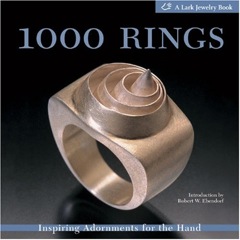
My experience with Robert Ebendorf was a watershed moment. Without his introduction to the international community, I may never have discovered the scope of interesting jewelry that was being created. Each juror that subsequently contributed to the series generously shared his or her unique expertise. I learned so much from each one. Finally, viewing 5000 to 15,000 images of jewelry in two days is an experience like none other. I emerged from these marathon sessions even more intrigued by jewelry and jewelers and thereby more inspired and committed to promoting the field.
The 500 series is a nearly perfect vehicle for exposure and stimulation. The books are widely distributed, affordably priced, need little translation and are easy-to-handle. They include images from jewelers working in all parts of the globe and sit on the shelves of institutions worldwide. This leads me to think they have had an affect on makers. I’ve also witnessed concepts, techniques and materials – even photography styles – become popular and spread rapidly. I think the 500 series has played a part in this.
Given your position with Lark and your work with contemporary jewelry, you’ve obviously thought a lot about how books about contemporary jewelry might fit into the publishing landscape. Are there any gaps you’ve identified, types of books or approaches to contemporary jewelry that you think should be published?
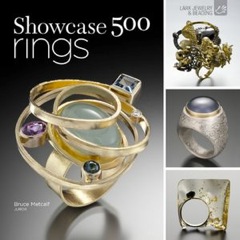
One way I have learned to thrive is to shift my perspective about the work I do. I am no longer a ‘book editor.’ I am a ‘content provider.’
Printed books still play a valuable role in the dissemination of information, but they aren’t the only and certainly not always the best route to the reader for specific content. Other delivery methods might include blogs, digital downloads, apps, videos, podcasts, community forums and so on. Different content may be best served via one of these (no longer) alternative formats. The challenge of publishing is monetizing these efforts.
Consider this video on powder coating by Michael Dale Bernard. Many jewelers are interested in learning and using this technique. Michael Dale produced and distributed an excellent product in a timely fashion that addresses their basic needs. He’s gotten almost 5000 views to date. Would enough of those viewers then subscribe to a pay channel to see more demos? Would they purchase a printed or digital book to learn more? Opinions and answers to these questions change at a mind melting pace and just when you feel you’re on course, along comes another giant wave.
Who do you think are the most interesting publishers of contemporary jewelry at the moment, and what makes them stand out in your opinion? You can consider ‘publisher’ in its old and new sense.
I think the most interesting publishers of contemporary jewelry are those actually printing jewelry. Three-dimensional printing. Seems like a cheeky answer, but there is a great deal of truth to it. If a United States artist transmits her design files to the Netherlands and a small edition is printed and sold there, is the artist publishing jewelry?
But you were probably meaning books . . .
I don’t think book publishers are particularly interesting. For me, it’s the topic, the writer, the editing, the photos, the curating, the design, the packaging and the printing that are interesting. That being said, I do have a particular fondness for small exhibition catalogs and monographs that make the most of the artful potential of the book as an object. More often than not, these are published by gallery and museums and the jewelers themselves.
So now that you have left Lark Books, what are you going to do?
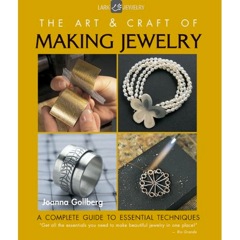
My second, eponymous business offers a wide range of custom freelance services for jewelers, publishers and arts organizations. My services are personalized for each client and they include writing and editing, marketing and promotions, public relations, brand evaluation and development, digital strategy and implementation, packaging for print, budgeting, project management, jurying and curating and editorial styling. Right now, I’m working on both long- and short-term assignments for a wide variety of clients, such as jewelers, publishers, and fashion stylists. My website for these services will launch later this month and my office will be located in my retail space. Stay tuned!
